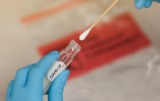
Inactivatig viral transport medium (VTM) - Transport media for microbiology
Transport media for microorganisms are essentially buffer solutions containing carbohydrates, peptones and other nutrients (excluding growth factors) designed to preserve the viability of bacteria during transport without allowing them to multiply. The main objective of using the transport medium is to keep the sample as close as possible to its original state.
Viral Transport Medium (VTM) allows the safe transfer of viruses, chlamydiae and mycoplasma for new research, including conventional cell culture methods, diagnostic tests and molecular biology techniques. Commercially prepared viral transport media are available in a screw cap plastic tube containing buffered proteins (serum, albumin or gelatin) and antibiotics. Antibiotics are usually incorporated into the viral transport media to suppress the growth of contaminating bacteria and fungi, so separate samples from the same site must be collected if bacterial or fungal cultures are also requested.
Inactivating VTMs are designed, as the name implies, to inactivate viruses contained in the sample. These VTMs are used for samples containing easily transmissible viruses and to prevent contamination of personnel handling these samples. Generally, inactivation is achieved by lysis of the virus particles. Many inactivating VTMs contain a surfactant such as guanidine salt and contain a protective agent to prevent nucleic acid degradation.
Resultados de su búsqueda : 2 Producto encontrado
Refine su búsqueda :
RUOCE / IVD
- Other products 2
Referencia
Descripción
Cond.
Precio Sin IVA
YMJ-TE14
50pcs/Box
‹
›


